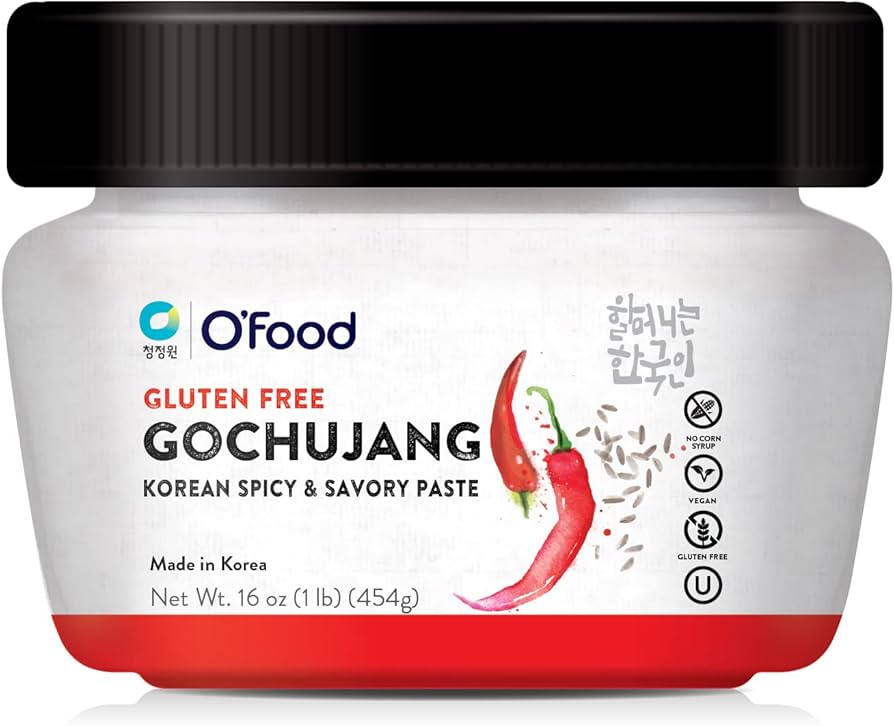My Journey to a Gluten-Free Gochujang Sauce
Alright everyone, settle in. Today I want to share something I’ve been tinkering with in my kitchen – making my own gluten-free gochujang sauce. You know how it is, you love a certain flavor, but then dietary needs throw a curveball. For me, that was gluten and my beloved gochujang.

I started this whole thing because finding a good gluten-free gochujang in stores was a bit of a pain. Some had hidden gluten, others were just…meh. So, I figured, why not try making it myself? I love a good kitchen project.
Gathering My Supplies – The Gluten-Free Quest
The first step, as always, was getting all my ingredients together. This part was crucial because everything had to be gluten-free, obviously.
- Gochugaru (Korean chili flakes): This is the heart of the sauce. I made sure to get a brand that was just pure chili flakes, no weird additives. I like the coarse ground kind for a bit of texture.
- Sweet Rice Flour (Mochiko): This is what gives the sauce its characteristic thick, slightly chewy texture. It’s naturally gluten-free, which is great.
- Gluten-Free Tamari: Regular soy sauce is a no-go because of wheat. Tamari is my go-to substitute here. Coconut aminos would also work if you’re avoiding soy.
- Rice Syrup: For sweetness and that glossy sheen. I’ve heard corn syrup works too, or even brown rice syrup. I had rice syrup on hand.
- Salt: Plain old salt. Nothing fancy needed here.
- Water: Good old H2O.
I decided to skip trying to find gluten-free meju powder (fermented soybean powder) for this version. While traditional, sourcing a truly gluten-free one felt like a whole other mission. I aimed for a sauce that captured the essence and flavor profile I was after, even if it wasn’t fermented for months in a traditional onggi pot.
Let’s Get Cooking – The Process

Okay, so I had all my bits and pieces. Time to actually make the sauce.
I started by mixing the sweet rice flour with some cold water in a saucepan. I whisked it really well to make sure there were no lumps. You want a smooth slurry.
Then, I put the saucepan on medium heat. The key here is to stir constantly. Seriously, don’t walk away. The sweet rice flour mixture will start to thicken pretty quickly. I cooked it, stirring all the time, until it was thick and bubbly, kind of like a very thick porridge. This took about 5-7 minutes.
Once it was nice and thick, I reduced the heat to low. Then, in went the gochugaru. I stirred that in thoroughly, making sure it was all incorporated. The kitchen started smelling amazing at this point – spicy and promising!
Next, I added the rice syrup, the gluten-free tamari, and the salt. I stirred everything together really well to combine all those flavors. I let this mixture simmer on very, very low heat for about 20 minutes. I kept stirring it occasionally to prevent it from sticking to the bottom of the pan. This simmering step helps the flavors to meld together and the sauce to darken a bit.

I did a taste test. This is where you can adjust things. Need a bit more sweetness? Add a touch more syrup. Not salty enough? A pinch more salt. My first attempt was a bit on the thin side, so the next time I used a little less water at the start and simmered it a tad longer to let it reduce and thicken more.
Cooling Down and Storing My Creation
After simmering and once I was happy with the consistency – a thick, rich, glossy paste – I removed the saucepan from the heat. I let the gochujang cool down completely in the pan. It thickens even more as it cools.
When it was totally cool, I transferred my homemade gluten-free gochujang into a clean, airtight glass jar. I popped it in the refrigerator. It should keep well for a few months in the fridge due to the salt content, but mine rarely lasts that long because I find so many uses for it!
The Final Result – Success!

And there you have it! My very own gluten-free gochujang sauce. The taste is fantastic – spicy, savory, with a nice underlying sweetness. The texture is thick and luscious. It’s perfect for all my Korean-inspired dishes, from bibimbap to marinades for tofu or chicken, or even just as a flavor boost in soups and stews.
It was so satisfying to make this myself and know exactly what went into it. If you’re gluten-free and missing that gochujang kick, I really encourage you to try making your own. It’s not as daunting as it sounds, and the reward is so, so tasty.
